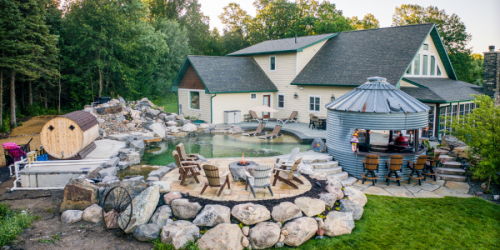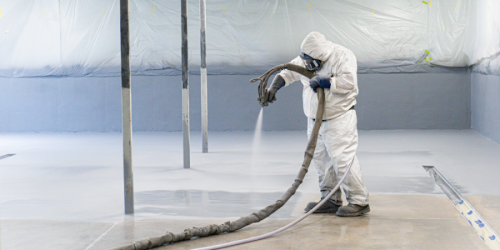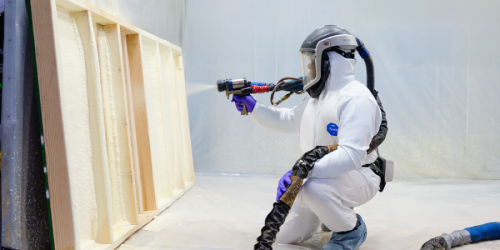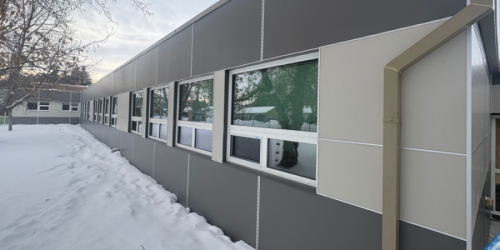Q&A Forums
unintended consequences Post New Topic | Post Reply
| Author | Comments |
|---|---|
|
Michael Fusco
Posted: Jun 28, 2009 07:15 PM
|
unintended consequences
Mason,Now that all foam will be covered, at least on the verticle surface in attics and crawl spaces, at least one unintended consequence is emerging. I found an ad by one manufacturer, who has teamed with a coatings manufacturer, who has aparently created a coating which has passed appendix X and is also a vapor barrier. So, now in cooling climates, we are applying a vapor barrier to the cool side!? Beware, I fear we are loading that gun yet again! You know...that gun we, as an industry, use to shoot ourselves about every 5-10 years. |
|
Posted: Jun 29, 2009 06:08 AM
|
,,,,amen,,, |
|
mason
Posted: Jun 29, 2009 07:07 AM
|
While I appreciate your concern I don't feel this is a serious issue. The main problem in cooling climates is unwanted air infiltration allowing warm moist air into the wall or ceilng cavity that then encounters a condensing surface (vapor retarder such as vinyl wall covering). This is a big problem with extremely high perm rated insulations that do not have any air barrier characteristics such as fiberglass and cellulose insulation. However, both open and closed cell foam stop unwanted air infiltration the main source of water vapor into the building. Then the only way for water vapor to go into the building is through diffusion. History, building science analysis and WUFI studies demonstrate that closed cell foam even with a vapor retarder membrane or covering on the cold side in summer does not allow condensation within the building envelope in typical construction even in warm humid climates. It must however, have a vapor retarder on the warm side in cold storage applications where the vapor drive is always towards the interior of the structure. Having worked in South Texas where the temperature exceeds 100 degrees F for months at a time with humidity averaging 80 to 90% I have installed and witnessd thousands of SPF applications where a vapor retarder membrane is covering the foam on the inside. The specific examples are SPF roofing systems over metal decks or buildings. Hundreds of thousands of closed cell foam applications have been installed over metal buildings where as you point out the vapor retarder is on the "wrong side" with no moisture condensation. This is because the foam slows down the water vapor transfer while effectively separating the inside and outside temperature so that a dew point is never achieved within the building. In winter, late fall and early spring, the vapor drive is in the other direction allowing any moisture that has migrated into the foam to come out again. I suspect that even though open cell foam has a much higher permeance than closed cell foam that the same thing will occur. But to be safe when using an open cell foam in a predominately cooling climate that has high outside relative hummidity you may want to peform a WUFI study or a similar hygrothermal modeling calculation to verify that any water vapor migrating into the foam during cooling months comes out during heating months without condensing. Roger, Have you performed a WUFI calculation on open cell foam with a vapor retarder coating over it in a warm humid climate such as South Texas or Florida? |
|
Michael Fusco
Posted: Jun 29, 2009 07:58 AM
|
That is exactly what I expected. So we just ignore code which says vapor barrier on the warm side, install as is convienient now that we have to, accept studies, which by the way do not account for the changing charecteristics that ccf exhibits as 245 comes out and air replaces, and make believe we know what we are doing...... pull back the hammer! |
|
Michael Fusco
Posted: Jun 29, 2009 08:08 AM
|
OK....all emotion aside. Can you explain the science that sees cold storage applications which MUST HAVE a vapor barrier on the warm side, and a humid day in Houston which does not? Remember this is one of the FEW areas where code ctually mandates a bvapor barrier. In both applications the hot humid air is on the outside and the low humidity, cold air is inside. WUFI calaulates that the vapor drive will be exponentially greater because (I think) the humidity level inside can be as low as 1% vs 40% in the home......but equilibrium between the cooler and the insulation can be reached in a cooler, usually not in a home due to outside temperature changes, and a lower delta T.......although you take a week of 100 high and 70-80 low with 85% humidity (which happens in Houston and south as you know), and a house set at 70 or below......and I would submit that equilibrium between the insulation and the house interior can be an issue. In the scenario above temperature changes keep the insulation above the dew point....maybe. With the cooler, it doesn't happen that way.....the insulation reaches below the dew point as the interior eventually accepts the transfer of warmth (however minimal) from the insulation (remember heat transfers from greater to lesser ALWAYS and is driven by the delta). WUFI is a great modeling tool, but it is a tool and is subject to some assumptions for which there are exceptions. Check the loads |
|
mason
Posted: Jun 29, 2009 08:18 AM
|
As the saying goes, "the proof of the pudding is in the eating" We have been installing SPF for close to 50 years along the Gulf Coast in hot humid climates, many times over metal or with coatings that could be considered slight vapor retarders. Guess what, no condensation within the foam. The only time you might have it is if the vapor drive is always in one direction such as in cold storage applications. Even with those you can have a vapor retarder on the inside if you also have stopped air infiltration and have a vapor retarder on the outside. (case in point, cold metal tanks such as anyhydrous ammonia storage tanks and SPF installed to the outside of metal cold storage buildings). I have been in buildings that were insulated in this way more than 30 years ago that have no condensation within the foam or within the building. So we have a very good track record of success. So why isn't there condensation? The foam effectively seperates the interior temperature and exterior temperature with a highly effective insulation. It also slows (not stops) water vapor transfer to the point that it never reaches the dewpoint within the foam or within the building. The foam is not a constant temperature, it varies. The temperature on the surface of the foam is the same as the interior temperature. The temperature of the exterior of the foam is similar to the outside temperature minus the effect of the roof decking and roofing system. The water vapor that can diffuse through the roofing system, any membrane, roof sheathing eventually reaches the foam and gradually enters the foam. Water vapor is absorbed into the foam as it goes along so most of the water vapor doesn't reach the interior, even on the hottest and most humid days there is not a constant vapor drive into the foam. And any water vapor that goes into the foam eventually comes out or stays in but doesn't condense. Check out Mark Bomberg's and Kumaran's studies on moisture transfer within closed cell foam. I only mention the open cell foam because we do not have as much history or documentation of applications of open cell foam in these climates as we do the closed cell applications. Remember I do not promote open cell over closed cell or closed cell over open cell. The main advantage to open cell foam is cost and sound proofing. The main advantage to closed cell foam is higher R value per inch (if you have a limited space), structural characteristics and water resistance.) Both can be installed in most any environment in the US and Canada without problems so long as they are installed and designed correctly, but this particular issue is not a serious concern. |
|
Michael Fusco
Posted: Jun 29, 2009 09:02 AM
|
I understand......so History is valid for vapor activities.....we have been installing in the gulf coast for years....no problems.....but when we talk about attis and crawl spaces.....we have been spraying uncovered ijn attics and crawl spaces for years with no incidents....History has no meaning...unless we go all the way back to the 70's with only CCF. I don't disagree with your observations...but you can't have it both ways...either history is meaningful or its not....we can't just revert to it when it agrees with our position. And by the way....I do believe the study predates 245, and I know that 245 and 141 are very different when it comes to diffusion. But as you say, and I happen to agree.....the proof is in the eating. Ready....Aim |
|
jimcoler
I have over 10 years of experience specifying and installing open and closed cell spray foam. I've sold my business but I'm still selling for the new owners and consulting on large and custom specific jobs. I've expanded my knowledge into t Posted: Jul 02, 2009 05:05 PM
|
U-Man - I'm assuming your next statement is "FIRE!" No not that subject again! We've been there in many of these forum discussions and we know where that got us with the attic and crawlspace issue!!! Just to chime in on this issue, I tend to agree with both of you. The moisture issues are rare and typically a result of poor install or improper design/thickness. Hysterically, we haven't had a widespread problem with moisture condensation issues, or fire issues, but did I say Historically or Hysterically? I guess this is Historically correct, but the code bodies tend to follow the Hysterical approach which over rules any Historical data as we've seen with the attic and crawlspace ignition barrier issue! If the codes were based on historical and accurate data, then we wouldn't be looking at coating foam with a paint in attics and crawlspaces as of June,1st 2010! So, I tend to agre with U-man that Mason can't have it both ways and be Hysterical on one subject but Historical on another! Jim Coler |
|
mason
Posted: Jul 02, 2009 08:40 PM
|
Jim, I have to disagree, we had plenty of fires in the past sufficient for the FTC to declare the consent decree. We are starting to see fires again. |





























